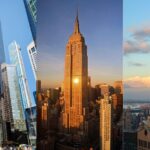Marvel's Avengers franchise is more than just a series of action-packed films; it's a visual masterpiece, driven by impressive architecture that plays a pivotal role in defining the atmosphere, personalities, and stories of the iconic superheroes. From the sleek, futuristic designs of Stark Tower to the awe-inspiring, sustainable structures of Wakanda, architecture in the Marvel universe is an integral part of its storytelling. In this blog, we’ll explore how architecture is used to create iconic landmarks, express the values of characters, and establish the tone of the Avengers films. Stark Tower: A Testament to Innovation and Modernity Stark Tower, located in New York City, serves as the headquarters of the Avengers and is one of the most recognizable pieces of architecture in the Marvel Cinematic Universe (MCU). Created by Tony Stark (Iron Man), Stark Tower is a symbol of innovation, technology, and luxury. Designed to reflect Stark’s cutting-edge technology and eccentric personality, the tower represents a perfect blend of futuristic design with practical architecture. The Avengers Compound: A Modern Fortress for Heroes The Avengers Compound, where the Avengers regroup after their battles, is another architectural feat that stands out. Hidden in the countryside, this sprawling estate is a perfect juxtaposition to the high-tech world of Stark Tower. Wakanda: Architecture of the Future Rooted in Tradition Wakanda, the fictional African nation of Black Panther, offers one of the most stunning examples of architecture in the MCU. Its unique blend of traditional African designs with advanced futuristic technology makes it one of …
The Architecture Behind Marvel’s Avengers: From Stark Tower to Wakanda
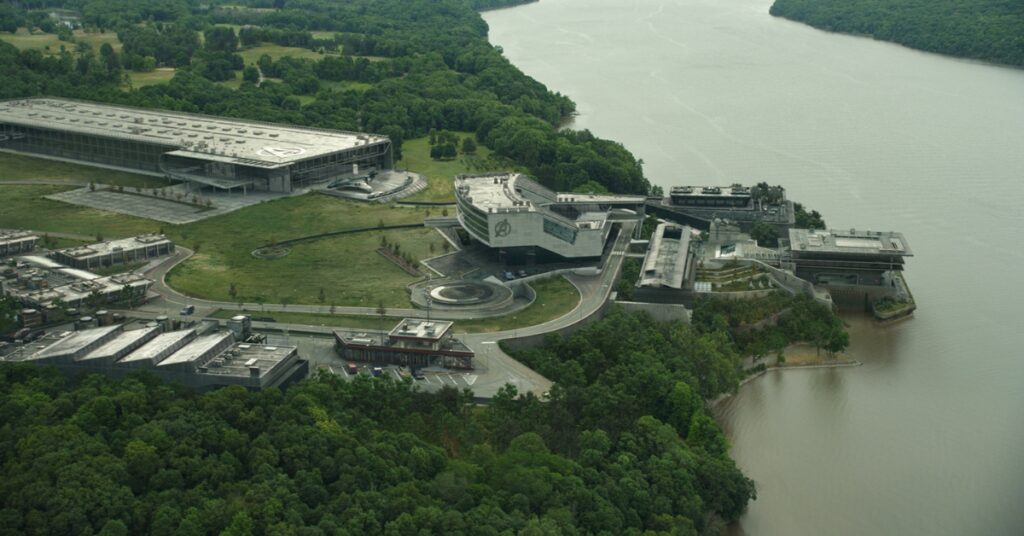
Marvel’s Avengers franchise is more than just a series of action-packed films; it’s a visual masterpiece, driven by impressive architecture that plays a pivotal role in defining the atmosphere, personalities, and stories of the iconic superheroes. From the sleek, futuristic designs of Stark Tower to the awe-inspiring, sustainable structures of Wakanda, architecture in the Marvel universe is an integral part of its storytelling.
In this blog, we’ll explore how architecture is used to create iconic landmarks, express the values of characters, and establish the tone of the Avengers films.
Stark Tower: A Testament to Innovation and Modernity
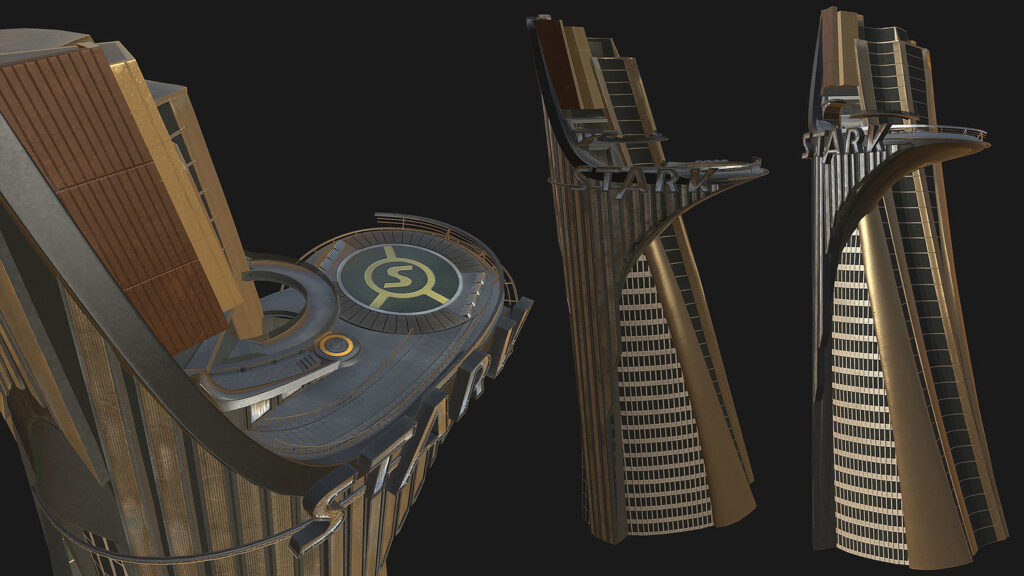
Stark Tower, located in New York City, serves as the headquarters of the Avengers and is one of the most recognizable pieces of architecture in the Marvel Cinematic Universe (MCU). Created by Tony Stark (Iron Man), Stark Tower is a symbol of innovation, technology, and luxury. Designed to reflect Stark’s cutting-edge technology and eccentric personality, the tower represents a perfect blend of futuristic design with practical architecture.
- Modern Aesthetics: The glass facade and sleek curves of Stark Tower showcase a minimalist design, emphasizing transparency and openness. The building stands as a testament to the advanced tech used by Tony Stark, making it one of the most technologically advanced structures in the MCU.
- Iconic Features: In the films, Stark Tower’s architecture includes high-tech features like automated AI systems, state-of-the-art laboratories, and advanced security measures. These elements align with Tony Stark’s genius and his drive to push the boundaries of science and design.
The Avengers Compound: A Modern Fortress for Heroes
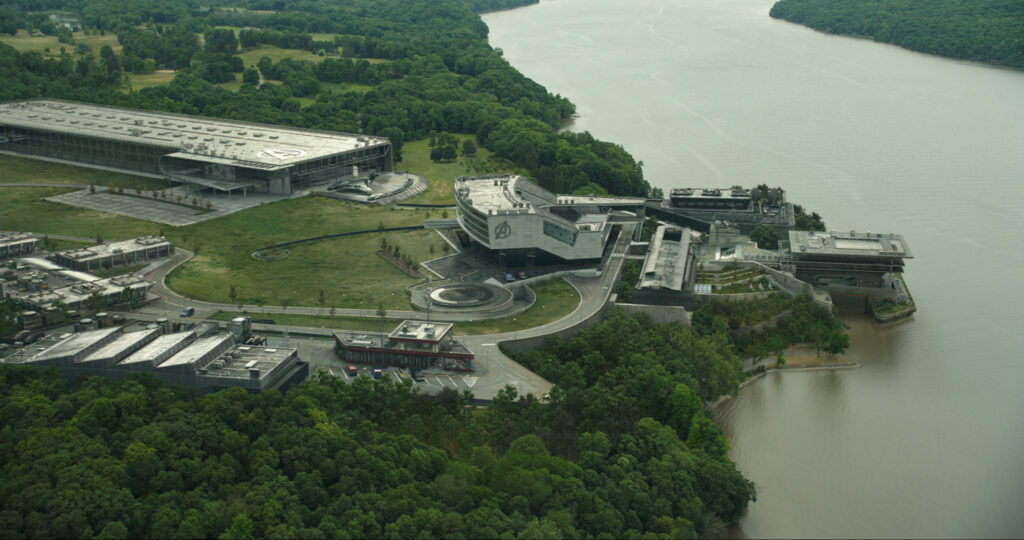
The Avengers Compound, where the Avengers regroup after their battles, is another architectural feat that stands out. Hidden in the countryside, this sprawling estate is a perfect juxtaposition to the high-tech world of Stark Tower.
- Functional Design: The Avengers Compound isn’t just a headquarters—it’s designed to provide a safe haven for the team. The compound reflects a balance between modern and military architecture, offering both security and comfort. The large, open spaces provide room for strategic meetings and training, while the state-of-the-art technology integrated into the building ensures the Avengers have the resources they need to battle evil.
- Natural Integration: The architecture of the compound blends well with its natural surroundings. The use of open fields and the integration of nature into the design hints at a more organic approach to superhero living, a safe and hidden environment that enables the team to rest and rejuvenate.
Wakanda: Architecture of the Future Rooted in Tradition
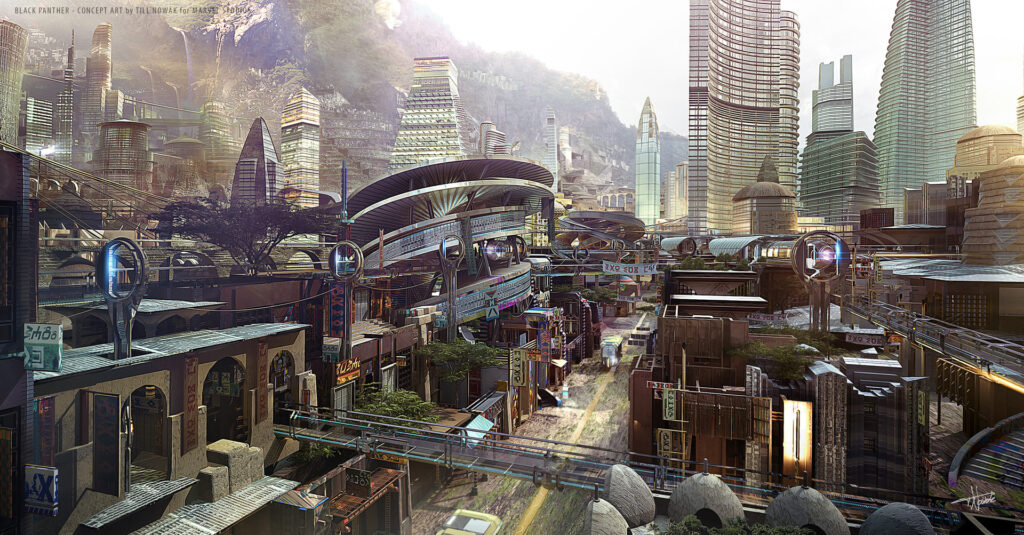
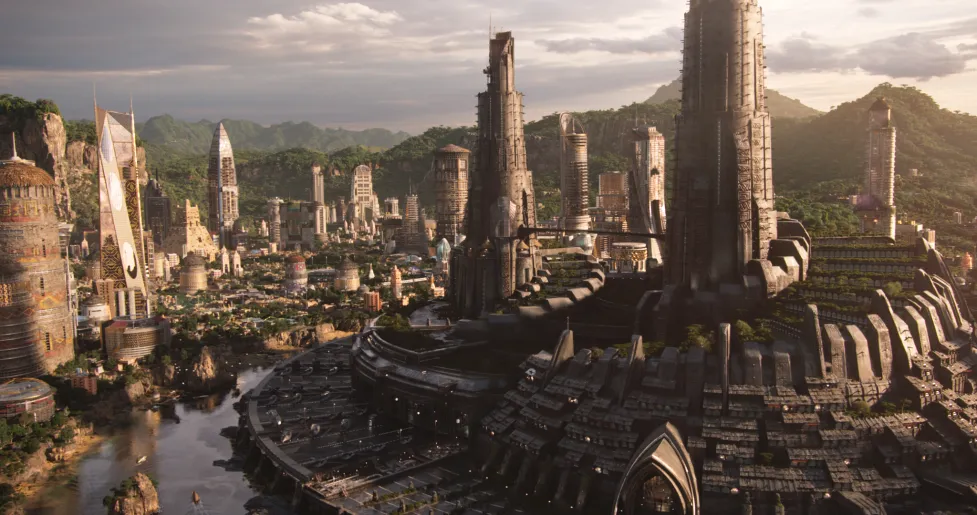
Wakanda, the fictional African nation of Black Panther, offers one of the most stunning examples of architecture in the MCU. Its unique blend of traditional African designs with advanced futuristic technology makes it one of the most distinctive architectural marvels in film.
- Fusion of Technology and Nature: The architecture of Wakanda reflects a harmonious relationship between nature and technology. Vibranium, the powerful metal at the heart of Wakanda’s advancements, is seamlessly integrated into their buildings, infrastructure, and everyday life. The Royal Palace, for example, uses futuristic materials while still honoring African tribal art and cultural motifs.
- Eco-Friendly Infrastructure: Wakanda’s use of green technology and sustainable architecture is a central theme. Their structures, like the Shuri’s lab, reflect the eco-consciousness and resourcefulness of the nation. The floating city design, sustainable energy solutions, and the use of natural elements like water and greenery make Wakanda an architectural symbol of environmental consciousness.
- Spiritual and Cultural Significance: The Dora Milaje’s headquarters and the Heart-Shaped Herb Cave are built with cultural symbolism in mind. The architecture not only serves the needs of its people but also connects with the spirituality and ancestral heritage of Wakanda, blending modernity with centuries of tradition.
Also Read – Top 10 Tallest Buildings in New York: The Giants of the Skyline
Avengers Tower: A Reflection of the Team’s Unity and Strength
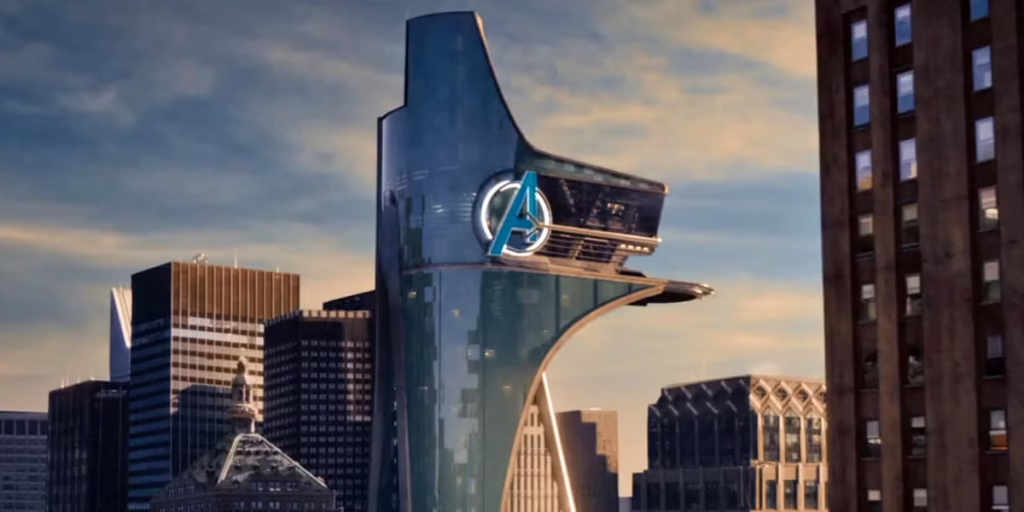
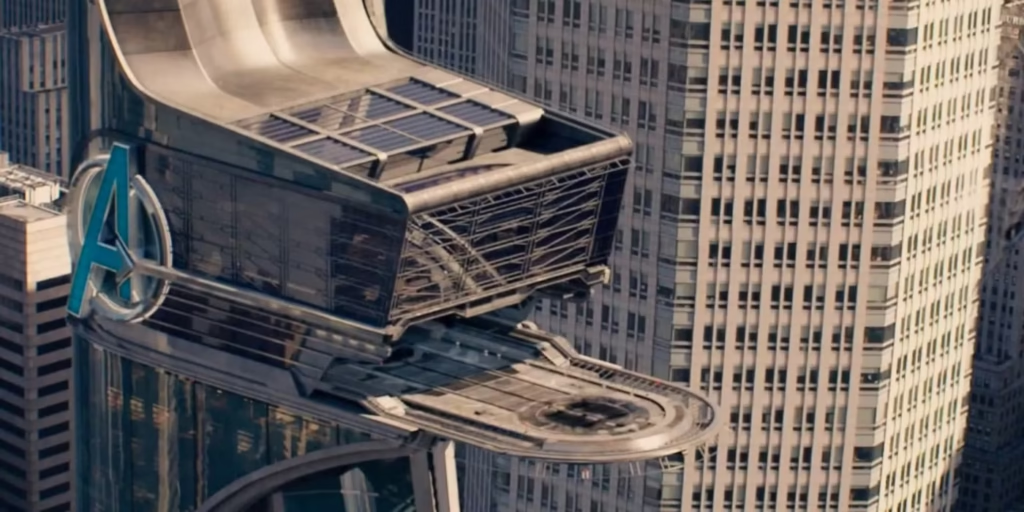
After Stark Tower is destroyed in the battle against the Chitauri in The Avengers (2012), the Avengers move into the Avengers Tower. The design of this new headquarters is an evolution of Stark Tower, but it carries greater symbolic meaning. It represents the unity and strength of the Avengers team.
- Striking Architecture: Avengers Tower’s architecture is sleek and imposing, with a glass and steel design that suggests transparency, teamwork, and resilience. The tall structure serves as both a military stronghold and a symbol of unity, mirroring the growing sense of cohesion among the heroes.
- Advanced Technology: Just like Stark Tower, Avengers Tower features cutting-edge technology. However, it also houses other Avengers’ resources and the Avengers Quinjet hangar, which are essential for the team’s worldwide missions.
The Architecture of Supervillains: A Dark Contrast
In contrast to the shining headquarters of the Avengers, the architecture of supervillains like Loki and Ultron reveals their dark and twisted motivations. Loki’s Asgardian architecture exudes an air of grandeur and ancient mysticism, while Ultron’s lair reflects his cold, mechanical nature.
- Loki’s Asgard: The golden, sprawling palaces of Asgard showcase regal and grandiose designs rooted in ancient Norse mythology, with structures adorned with intricate carvings and massive columns. These symbolize the god-like nature of Loki and his family.
- Ultron’s Lair: On the other hand, Ultron’s lair is minimalist, cold, and industrial. The architecture reflects his artificial intelligence and lack of humanity, with sharp angles, metallic surfaces, and dark, sterile settings.
Conclusion: How Architecture Shapes the MCU
From the futuristic Stark Tower to the eco-conscious city of Wakanda, the architecture behind the Marvel universe is as much a part of its identity as the superheroes themselves. It helps to convey themes of innovation, unity, and heritage while reflecting the personalities and values of the characters who inhabit these spaces.
Marvel’s use of architecture enriches the narrative by providing visual cues about the world these characters live in, making the setting just as important as the heroes’ battles. Whether it’s a sleek, high-tech headquarters or a nature-inspired futuristic city, the architecture of the MCU is an integral element that enhances the storytelling experience.

